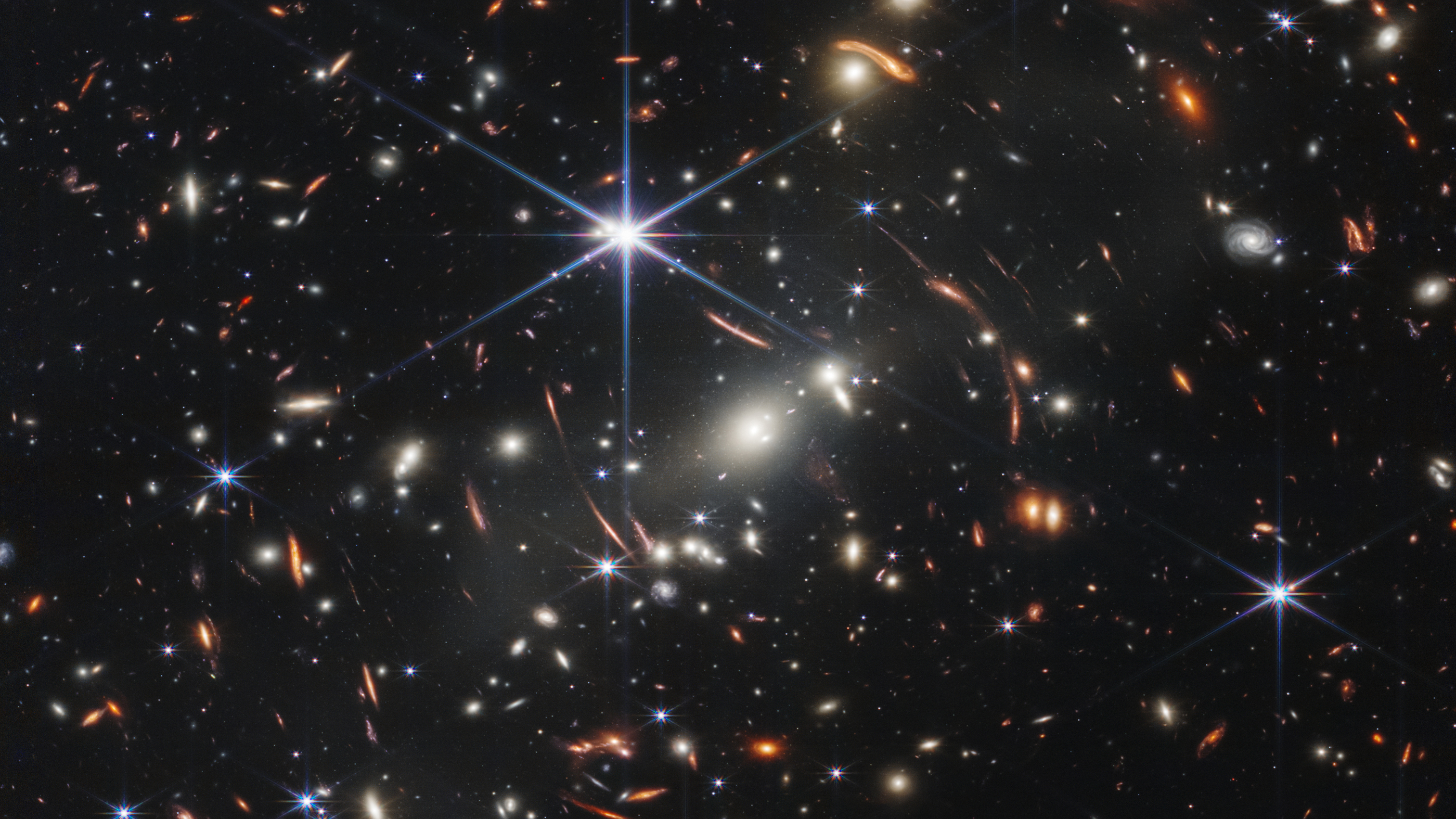President Biden reveals the James Webb Space Telescope’s “poetic” first image of the universe
This infrared view of a small patch of sky is the first publicly-released science image from the new space telescope.

US President Joe Biden has revealed the first image taken by the James Webb Space Telescope (JWST), showcasing some of the most distant galaxies ever seen.
Announced today from the White House with NASA, the image shows a small portion of the sky—comparable to the span of a grain of sand held at arm’s length—enhanced considerably by the JWST’s light-collecting power. The result is a view of thousands of galaxies. The more remote ones date to a time more than 13 billion years ago, not long after the dawn of the universe, and have been magnified into view by a massive galaxy in the foreground.
“It is a new window into the history of our universe,” President Biden said. “Today we’re getting a glimpse of the first light to shine through that window.”
Launched on Christmas Day 2021, the $10 billion JWST is the most advanced telescope ever sent to space. Measuring 21 feet across and sporting 18 gold-plated hexagonal mirrors, the infrared telescope—a collaboration between the US, Europe, and Canada—is able to peer further and more accurately across the cosmos than any other instrument, far exceeding even Hubble.
Over the last few months engineers have been working tirelessly to get the machine, which is protected from the sun’s rays by a vast tennis-court-sized sunshield, up and running. Positioned 1.5 million kilometers from Earth, beyond the orbit of the moon, the telescope is now ready for duty. “You keep pinching yourself,” says Mark McCaughrean, senior advisor for Science and Exploration at the European Space Agency. “It’s just so surprisingly good.”
The image unveiled today by President Biden is the first of four that are set to be released this week, the others being pictures of two spectacular nebulae and a compact group of galaxies. A fifth observation, a preliminary study of the atmosphere of a planet in another solar system, is also set to be revealed.
“It’s like putting eyeglasses on for the first time,” says Wendy Freedman, an astronomer at the University of Chicago. Paul Byrne, an astronomer at Washington University in St. Louis, describes the image as “poetic,” revealing a whole host of galaxies inhabited by stars and planets across the cosmos.
These test images are a small glimpse of what the telescope, which is run by NASA and the Space Telescope Science Institute in Baltimore, is capable of. The JWST's first year of scheduled scientific observations includes detailed studies of exoplanets, investigations of remote galaxies, and expeditions deep into the sky and thus far back in time, toward the Big Bang itself.
“This observatory is seeing stuff we’ve never seen before,” says Michael Menzel, lead mission systems engineer for the JWST at NASA’s Goddard Space Flight Center in Greenbelt, Maryland, “and it’s only in first gear.”
Deep Dive
Space
How to safely watch and photograph the total solar eclipse
The solar eclipse this Monday, April 8, will be visible to millions. Here’s how to make the most of your experience.
How scientists are using quantum squeezing to push the limits of their sensors
Fuzziness may rule the quantum realm, but it can be manipulated to our advantage.
The great commercial takeover of low Earth orbit
Axiom Space and other companies are betting they can build private structures to replace the International Space Station.
Stay connected
Get the latest updates from
MIT Technology Review
Discover special offers, top stories, upcoming events, and more.